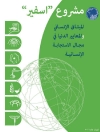This book provides a uniquely positioned contribution to the current debates on the integration of immigrants in Europe. Twelve social anthropologists—“strangers by vocation”—reflect upon how they were taken in by those they studied over the course of their long-term fieldwork. The societies concerned are Sinti (northern Italy), Inuit (Canadian Arctic), Kanak (New Caledonia), Māori (New Zealand), Lanten (Laos), Tobelo and Tanebar-Evav (Indonesia), Banyoro (Uganda), Gawigl and Siassi (Papua New Guinea) and a township in Odisha (India). A comparative analysis of these reflexive, ethnographic accounts reveals as yet underrepresented, non-European perspectives on the issue of integrating strangers, enabling the reader to identify and reflect upon the uniquely Western ideals and values that currently dominate such discourse.
विषयसूची
1. Introduction.- 2. Becoming a Sinta: learning to see dreams and relating to the dead.- 3. ‘You are like geese’. Working and rum dancing with the Inuit elders in Nunavut (Canada).- 4. Being the otheri n Inuit society.- 5. An anthropologist in Kanaky. Modulations of belonging and otherness.- 6. A stranger-anthropologist as advocate of Māori development projects.- 7. On becoming a ritual master among the Lanten – Yao Mun – of Laos.- 8. To be made part part of Tobelo society (North Moluccas).- 9. Welcome to Tanebar-Evav – can one be incorporated in a village society?.- 10. Naming and Becoming a Munyoro in Western Uganda.- 11. Placing the newcomer – staying with the Gawigl of Highland Papua New Guinea.- 12. Mythical beings from the swamp among the Siassi, Papua New Guinea.- 13. Strangers on an industrial frontier in Eastern India.
लेखक के बारे में
Jos D. M. Platenkamp is Professor of Social Anthropology in the Institute of Ethnology at the University of Münster, Germany. Almut Schneider is Associate Researcher in the Department of Social and Cultural Anthropology at the Goethe University Frankfurt, Germany.












